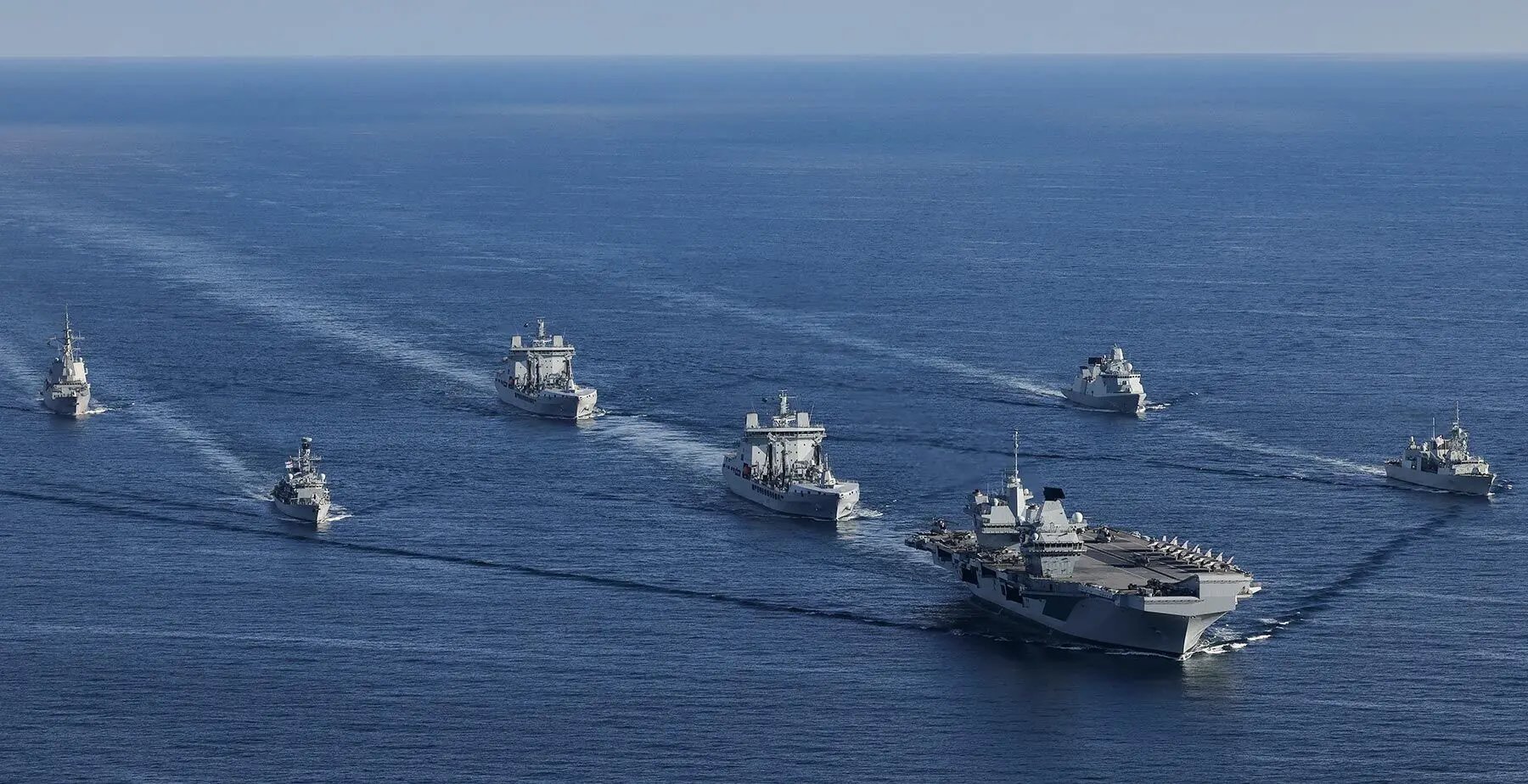The Carrier Strike Group is a powerful reminder that defence and diplomacy are tied together
HMS Prince of Wales flagship for multinational exercise Steadfast Defender, 2024.
Just under 120 years ago, the Great White Fleet set sail on its landmark journey around the world, covering 43,000 miles and calling in at twenty ports. With sixteen new battleships and 14,000 sailors, President Theodore Roosevelt’s new American Navy was a bold demonstration of the US’s newfound ability to flex its military might globally. Likewise, by making appearances across Europe and Asia, it showcased American influence and prestige on the international stage. It was the epitome of Roosevelt’s foreign policy philosophy: “Speak softly and carry a big stick. “
Navies have long been instruments of hard and soft power, and the deployment of the UK’s Carrier Strike Group 25 does the same. The eight-month mission of the HMS Prince of Wales accompanied by frigates, destroyers and submarines is being used by the Ministry of Defence as a path to “reaffirming the UK’s commitment to the security of the Mediterranean and Indo-Pacific, while providing an opportunity to promote British trade and industry.” As Minister for the Armed Forces, Luke Pollard MP, put it, “[t]his isn’t just about hard power; it’s about building influence.”
Whilst the presence of a British aircraft carrier in the region will not necessarily halt Chinese threatening exercises in the Taiwan Strait in the long-term, which once again ramped up at the start of this month, it does send a clear signal and could deter an invasion of Taiwan and greater aggression in the South China Sea. It demonstrates to allies and prospective partners that the UK is prepared to support a free and open Indo-Pacific, even amid Beijing’s increasingly assertive behaviour. The deployment could hardly be more timely.
Western soft power has recently suffered setbacks. The imposition of American tariffs have sparked global concern of Washington’s reliability, allowing China to exploit the uncertainty. President Xi has been on a charm offensive across South East Asia, visiting Vietnam, Malaysia and Cambodia in a strategic effort aimed to prise nations away from American influence and into Beijing’s orbit. In Vietnam, he told Secretary-General To Lam to work with China to “oppose unilateral bullying”, a thinly veiled criticism directed towards the White House.
A stronger Chinese grip on the region would threaten its stability. As more nations would fall under its influence, fewer would be willing to challenge Beijing’s territorial ambitions. While many Indo-Pacific nations are uneasy about China’s growing military prowess, without visible support and commitments from the US, UK and Europe, they are less likely to resist or oppose. That’s when deterrence collapses and China is emboldened.
Alliances are our greatest strategic asset. The CCP wants to see the unity between the West and its Indo-Pacific partners falter. In this context, the UK’s decision to send the Carrier Strike Group to the region underlines our commitment to countering Chinese belligerence and advancing a strategy of collective deterrence. It sends a message of trust, solidarity, and a shared purpose.
Beyond rebuilding trust, the Carrier Strike Group will be conducting a series of exercises and operations with South-east Asian partners, Japan, and Australia, as well as NATO partners — Canada, Norway and Spain. These joint exercises with critical partners increases interoperability between us by breaking down barriers in language, doctrine and structures so that we can respond more cohesively to the region’s security challenge. They strengthen military readiness and will boost performance. Moreover, it will showcase Britain’s potential to lead coalitions in confronting the defining threat of this century.
Hard and soft power — defence and diplomacy — are not separate tools. They are interdependent. Our foremost piece of military kit, an aircraft carrier, serves an essential diplomatic purpose. Likewise, the power of attraction of the UK serves a strategic purpose, reinforcing a collective military effort in the face of rising threats. The Carrier Strike Group can be seen as our own miniature Great White Fleet.

